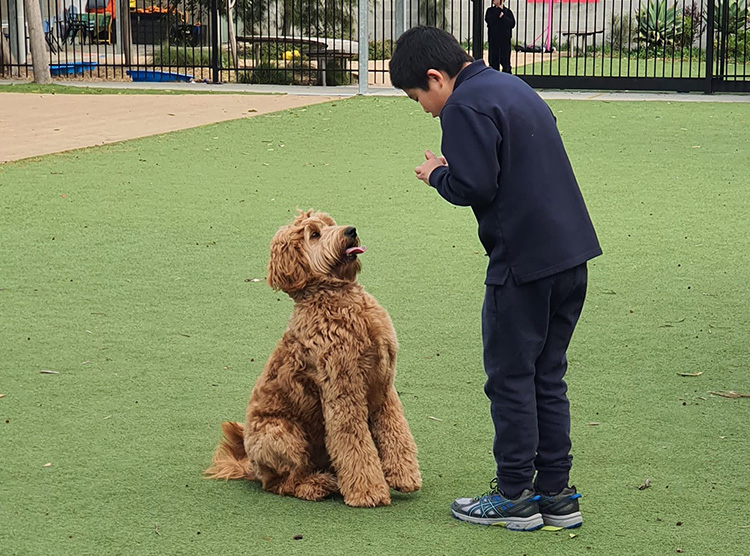
Our Blog
A therapy dog's welfare must be taken into consideration.

Our dogs are such an important part of our business. We would not be able to connect with our clients and understand their needs as quickly as we do because our dogs help break down those barriers and build trust.
We want to look after our working dogs so they live a long and happy life, doing what they love - helping young people. Unfortunately, there are no uniform expectations or government-sanctioned industry standards for the welfare of working therapy dogs in Australia at the moment. Canine Comprehension encourages our tutors to follow the Australian-based Lead that Way Institute in this regard, which founded the Animal-Assisted Intervention Association of Australia (AAIAA). The AAIAA provides guidance, leadership and certainty in guidelines and standards of practice for AAI in Australia.
Canine Comprehension also takes guidance from the UK, Department for Environment, Food and Rural Affairs, Code of Practice for the Welfare of Dogs (2018) as a guide which states that handlers should:
- “Provide your dog with a safe, clean, quiet environment. Make sure that you provide adequate protection from hazards.
- Provide your dog with a comfortable, clean, dry, quiet, draught-free rest area, which has appropriate ventilation and is lit either naturally or artificially.
- Provide your dog with somewhere they can go to avoid things that frighten them.
- If your dog is kept in a kennel, you should check them frequently and ensure they are not in danger or distressed.
- Provide your dog with access to an appropriate place, away from their resting area, which they can use as a toilet area regularly as needed and at least every few hours.
- Make sure that any place you leave your dog is large enough to provide, at all times, a comfortable area with effective ventilation and temperature control, and that your dog is able to move around to ensure its comfort, avoiding becoming too hot or too cold.
- When you transport your dog make sure they are comfortable and safe at all times.
- Do not leave your dog unattended in situations, or for periods of time that are likely to cause them distress or render them unsafe.
- Keep your dog under control and safe at all times and do not let them stray.”
Canine Comprehension prioritises our therapy dog's needs when making organisational decisions within the company. To do this we employ the best standards from Australia and overseas. The purpose of Canine Comprehension seeking to comply with such standards means our tutors feel confident that they are following best practices for working with their dogs. No set of standards can tell them precisely how to care for their therapy dog, each animal has its own unique set of needs, but it does give guidance as to what to do when making decisions about their standard of care.
We work very hard for a trusting bond to be built between the tutor and therapy dog. This trust is developed through time, training and, most importantly, living with the dog. This trust allows our dogs to go into busy schools and feel relaxed enough to focus on their job because they know their owner is in charge and can be trusted to take the lead in every situation.
We see the benefit of dogs working with young people every day. Dogs in schools can soothe worried minds and gently calm wriggly bodies, (our work is underpinned by current research in neuroscience and neurobiology), create a more positive learning environment, and an opportunity to further build quality peer relationships and foster a safe place where students feel accepted. Generally, therapy dogs create an inviting and warm environment and increase feelings of relaxation through a comforting presence during tough times. They do so much for us - the least we can do is provide safe working conditions for them.
